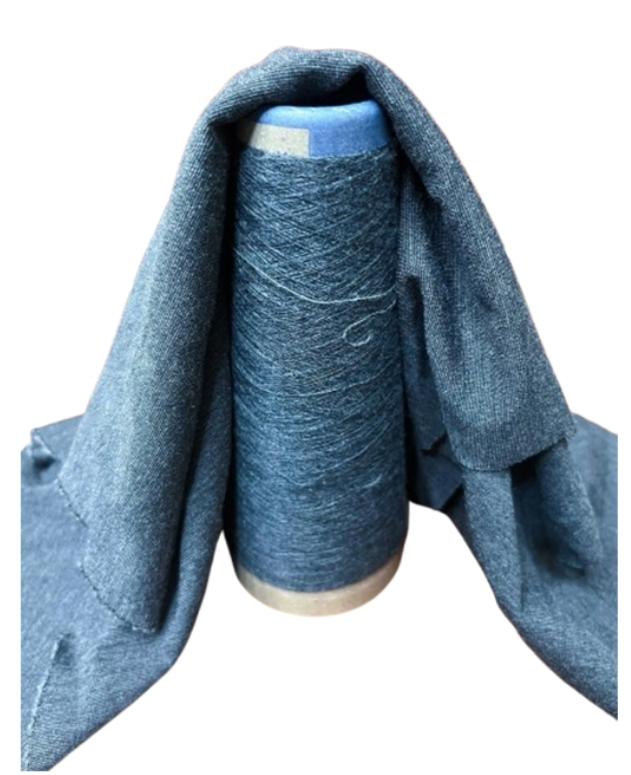The identification of ring spinning and air flow spinning
Ring spinning is spun on a ring spinning machine, and the twist direction of Expanded Acrylic is all Z twist, so S-twist is used for pushing and twisting, and the fibers can be separated. Air flow spinning works by creating vortices through the swirling of air. As a result, the fibers on the surface of the yarn are entangled with each other, while the internal fibers have a certain degree of twist. However, due to the entanglement of the surface fibers, no matter whether Z-twist or S-twist is used for untwisting, the fibers cannot be separated. Therefore, through the above methods, the two can be distinguished. Moreover, for yarns of the same yarn count, the strength of the ring spinning is better than that of the air flow spinning, and the wool and dry strands of the air flow spinning are better than those of the ring spinning.
The distinction between jet spinning and vortex spinning
The structure of air-jet yarn consists of two parts: the yarn core and the outer fibers. The yarn core is parallel and has twist, with a relatively tight structure. The outer fibers are loose and randomly wound around the outside of the yarn core. Therefore, the structure of air-jet yarn is more fluffy and the appearance is fuller. The structure of the vortex yarn is also divided into the core and the outer fibers. The core fibers are arranged in parallel without twist, while the outer fibers are wound in a regular spiral around the surface of the core. Moreover, the proportion of regular spiral wound fibers on the outer layer is relatively high, accounting for about 60% of the total fibers. As a result, the untwisted fibers inside are almost completely covered, overcoming the problem of exposed core in the jet yarn. The arrangement of the surface fibers is closer to that of the traditional ring spinning yarn. The structure is relatively compact.
Therefore, as long as the outer fibers are peeled off and the inner fibers are twisted and the outer wrapped fibers are regular, the two can be distinguished. And jet spinning is mainly for the production of chemical fiber cotton blends, pure chemical fiber yarns and their blends Expanded Acrylic. There is no jet spinning for pure cotton.
The identification of cotton yarn from human cotton yarn
When cotton yarn burns, it does not produce sparks, while human cotton yarn does produce sparks and burns faster than cotton yarn.
2. When cotton yarn is moistened with water, its strength does not decrease. However, when artificial cotton yarn is moistened with water, its strength drops significantly, and the wet strength is much less than the dry strength.
3. Put both cotton yarn and rayon yarn into a cup of water at the same time. Since rayon yarn has better permeability than cotton yarn, it will sink to the bottom of the cup first, while cotton yarn will sink a little slower (but it is worth noting that cotton yarn that has just undergone pretreatment and has not been washed with the alkali solution for desizing will also immediately become moist and sink to the water due to the penetration effect of the alkali).
The identification of silk and wool yarn
Both silk and wool yarn give off a burnt feather smell when burned, so we can't tell them apart at this point. Therefore, we can only distinguish them by looking at the amount of individual fibers. After silk is dyed and combed, some sericin is removed, so the two filaments are separated. If it is 1/22D/20D of silk, the number of filaments will become 14 to 16. In addition, we can also quickly distinguish them from the luster. In addition, in terms of spinnable count, 1/22D/20D is approximately 500 yarn counts, which can only be achieved by embedded Expanded Acrylic, so we can also distinguish by the fineness of the raw material.
Expanded Acrylic https://www.jinhangyarn.com/50mm-Six-Double-Strands-Expanded-Acrylic-Combed-Cotton.html
